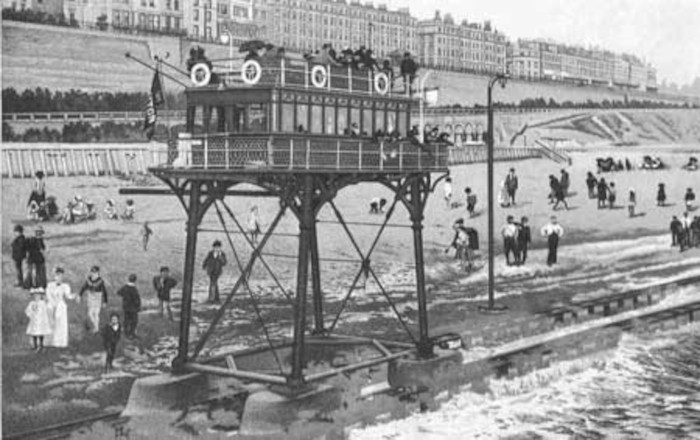
In 1896 engineer Magnus Volk faced a problem. The electric railway he’d built on England’s south coast reached a terminus at Paston Place — the difficult terrain beyond that point made a conventional railway impractical. The solution he reached was unique: He laid tracks under the surface of the English Channel and built a car on 7-meter stilts that could wade, so to speak, through the surf to a pier at Rottingdean. Driven by electric motors, it was christened Pioneer, but crowds quickly dubbed it Daddy Long-Legs. By the end of 1897, 44,282 passengers had undertaken a rail voyage at sea — under regulations at the time, the car was even equipped with lifeboats and kept a sea captain on board.
The line ran successfully until 1901, when the local council chose to build a beach protection barrier and Volk couldn’t afford to divert the railway. Eventually it was moved onshore, but the concrete sleepers can still be seen at low tide.
